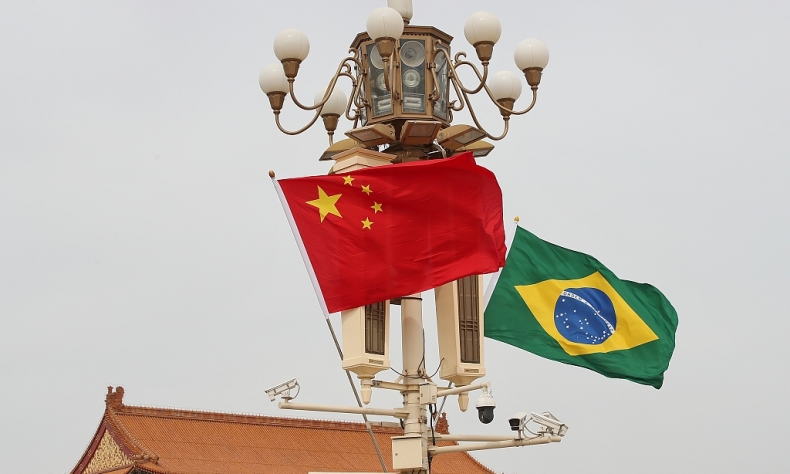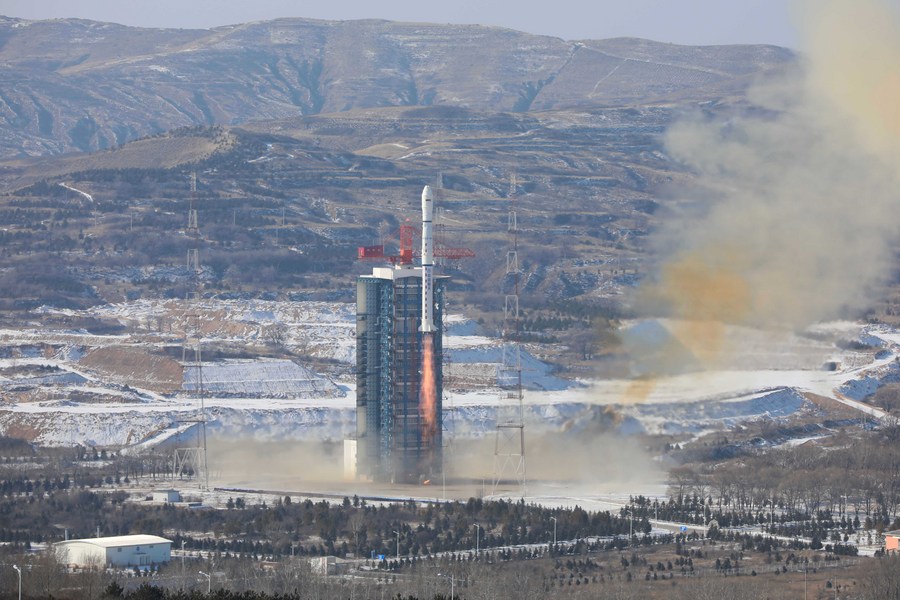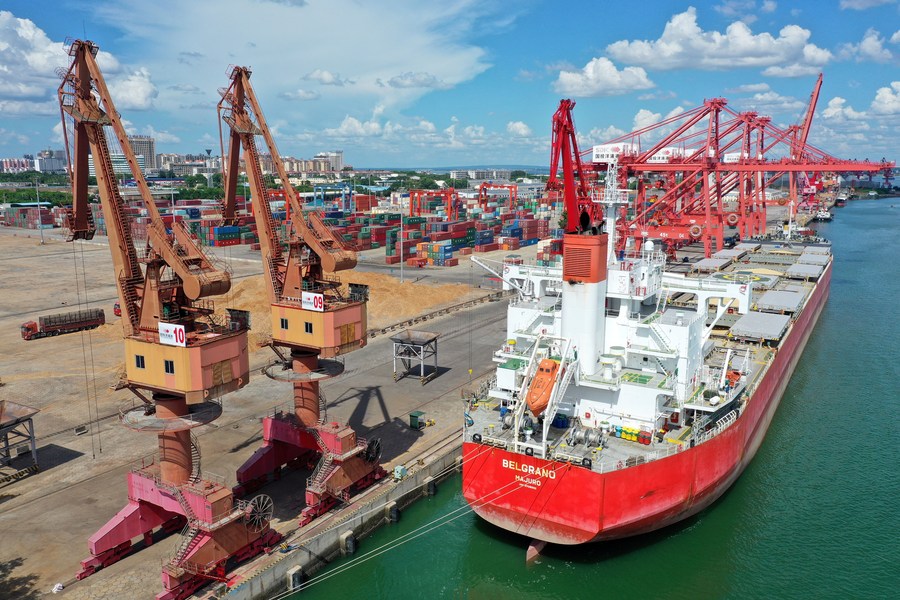It Is Time for Brazil to Join the Belt and Road Initiative

The BRI represents a large-scale systematization of the concept of win-win relations coined by Chinese diplomacy.
Since Chinese President Xi Jinping launched the Belt and Road Initiative (BRI) in 2013, the scope and geographical reach of the initiative have grown considerably. While its first land and maritime economic corridors only geographically focused on Eurasia and part of the East African coast, recently, its projects have expanded to include other regions, including Latin America and the Caribbean. For example, representatives of the governments of China and Argentina have signed a cooperation plan in Beijing on June 4 to jointly promote the construction of the BRI.
Although more than 20 Latin American and Caribbean countries have officially joined the BRI, Brazil (one of China’s major political and trade partners in the region) has not. However, an analysis of the main benefits of implementing the BRI in Latin America and the history of Brazil-China relations demonstrates that Brazil’s entry is not only natural but also essential.
The relationship with Brazil has a special significance for China in Latin America. In recent years, the South American country has proven to be one of China’s main comprehensive partners in launching multilateral initiatives in the global environment. Brazil is the only Latin American founding member of the Asian Infrastructure Investment Bank (AIIB) and also jointly builds with China the BRICS and its New Development Bank (of which former Brazilian President Dilma Rousseff recently became president).
The ties between the peoples of Brazil and China have been lasting for more than 200 years, dating back to when the first group of Chinese landed on Brazilian territory, which today is home to more than 200,000 citizens from China. And since the establishment of diplomatic relations in 1974, several successful initiatives have set the tone for bilateral relations, such as the development of the China-Brazil Earth Resources Satellite program, signed in 1988; the establishment of the Strategic Partnership in 1993, the first with this nomenclature recognized by the Chinese government in the world; and the elevation of relations to the level of Global Strategic Partnership in 2012.

Since the sworn-in of President Lula in January 2023, high expectations have been created on even further engagement of Brazil and China. During previous Lula governments (2003-2010), several joint initiatives were celebrated by the two countries, such as the establishment of the Sino-Brazilian High-Level Commission for Consultation and Cooperation (COSBAN) and the China-Brazil Business Council (CBBC). During Lula’s recent visit to China, the two state leaders signed 15 new bilateral governmental agreements and another 20 commercial contracts between companies and public agencies of both countries.
But despite this growing Sino-Brazilian synergy, Brazil’s adhesion to one of the main cooperation projects launched by China still needed to materialize. One of the main reasons lies in Brazilian caution about U.S. reactions. It is also influenced by the misperceptions of some of the Brazilian elites about the character of Brazil’s relations with China. This explains why when interviewed by the Global Times, Celso Amorim, top foreign policy adviser to President Lula, mentioned that Brazil is still studying the possibility of joining the BRI and that there has been a kind of informal BRI in the relations between China and Brazil for many years.
The rhetorical and practical changes in how U.S. diplomacy addresses China’s global rise in recent years are striking. Historically, the U.S. has exercised imposing and inflexible leadership in Latin America, sometimes using formal and informal violent means to overthrow governments which were not in line with its regional strategic objectives. With China’s growing political and commercial relations in Latin America and the accession of several countries in the region to the BRI, these pressures have taken on a more aggressive character, as illustrated, for example, by the harsh criticism from U.S. diplomacy of Chinese investments in Latin America and Huawei’s 5G technology implementation projects.
Part of these pressures and Washington’s anti-China propaganda has influenced the imagination of some Brazilian elites. Some high-ranking military officers mindlessly believe in the farce that the BRI involves a project of world geopolitical domination by China. Contradictorily, these same military men don’t seem to care about the numerous U.S. military bases that have surrounded Brazilian territory, especially the Amazon for decades. Important Brazilian business sectors also follow without questioning farcical narratives such as the one about the supposed debt trap involving the BRI and try to relate the last decades of Brazilian industrial stagnation with the intensification of commercial relations with China. They ignore that the real causes of Brazilian deindustrialization reside in the high-interest rates and submission to the financial system that destroys the national economy and in the corrosion of the federal apparatus generated by criminal privatizations of strategic state-owned companies.

The set of projects involving the BRI complements Brazil’s strategic interests. One of the principal axes of the BRI is related to investments in infrastructure projects, precisely one of the main economic bottlenecks of Brazil, which annually invests about a tiny 2 percent of its GDP in infrastructure. Brazil’s bilateral relations with China in recent years has mainly proven beneficial to both countries. It belies the propagandistic accusations of those who seek to weaken Sino-Brazilian ties. In the last decade, Brazil has received 47 percent of Chinese investments in South America. Since 2009 China has been Brazil’s leading trading partner, taking over the position held by the U.S. since 1929. In 2022, Brazil’s exports to China reached a record $89 billion, and it has a large surplus in its balance of trade with the Chinese.
(Editor’s note: According to China Customs Statistics, Brazil’s export to China hit $109.52 billion, and imports from China at $61.98 billion; Brazil had a surplus of $47.55 billion).
The BRI represents a large-scale systematization of the concept of win-win relations coined by Chinese diplomacy. While respecting the sovereignty and interests of other countries, China is willing to not only expand trade ties but deepen the range of cooperative initiatives with nations and governments of different hues, regardless of their political beliefs or orientations. The recent success of China’s mediation of the rapprochement between Saudi Arabia and Iran in the Middle East demonstrates China’s benign role in different regions of the world. While certain great powers continue to export color revolutions and covert actions to destabilize governments and nations around the world, China encourages and invests in the expansion of connections and cooperative relations between different regions of the planet.
Undoubtedly, the same situation pattern is replied in Latin America, and Brazil’s political and diplomatic weight pushes it to act, facing this conjuncture haughtily and pragmatically. In a nutshell, it is clear and reasonable that it is time for Brazil to decisively join the BRI and reiterate its historical alignment with the principles in defense of a multipolar world marked by the primacy of peace, economic development, and social justice, strengthening the benign option to build a community with a shared future for mankind.
The article reflects the author’s opinions, and not necessarily the views of China Focus.
 Facebook
Facebook
 Twitter
Twitter
 Linkedin
Linkedin
 Google +
Google +










